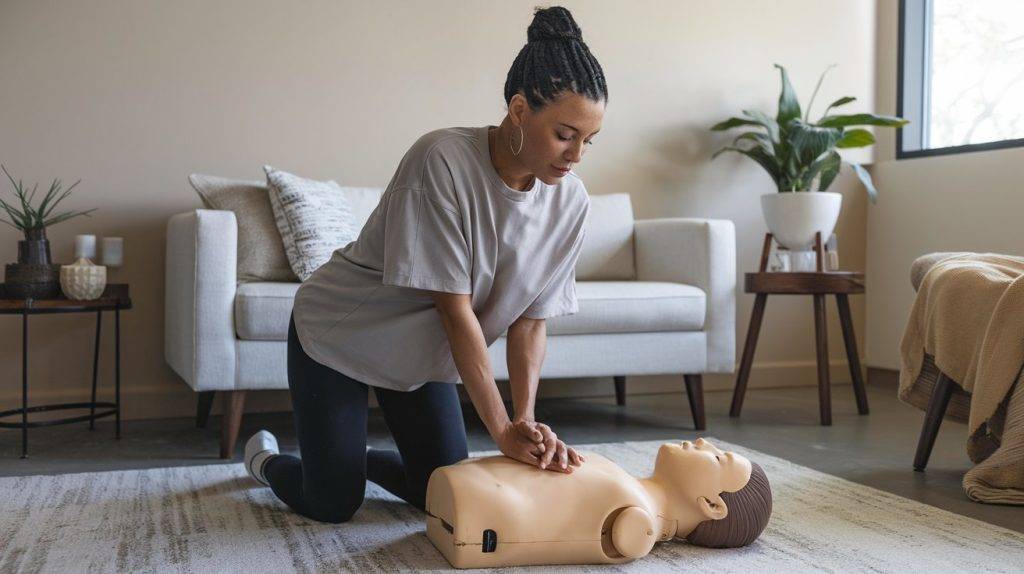Training and Assessment Delivered on Behalf of Allens Training Pty Ltd RTO 90909
What Should I Wear to a First Aid Course? Your Guide to Staying Comfortable
When it comes to preparing for a first aid course, most people focus on what they’ll learn, but what should you wear to a first aid course? It might seem like a minor detail, but the right outfit can make a significant difference in how comfortable and effective you are during the training. Whether you’re attending a first aid course here in Wollongong or anywhere else, wearing the right clothing and footwear ensures that you’re ready to participate fully in all the activities, from CPR to simulated emergency scenarios.
Wear Enclosed Footwear
First on the list of what to wear to a first aid course is your footwear. Enclosed, comfortable shoes are essential. During the course, you’ll be spending time on your knees, especially when practicing CPR, and the right footwear can make all the difference. Sneakers or any other type of flat, supportive shoes are ideal.
Avoid sandals, flip-flops, or any type of open footwear. Not only do these fail to provide adequate support, but they also leave your feet vulnerable during physical activities. You’ll be moving around a lot, and proper shoes will help you maintain balance and stability as you learn life-saving techniques.
What to wear? Keep it Comfy

The next thing to consider when deciding what to wear to a first aid course is comfort. These courses are hands-on, and you’ll be required to bend, kneel, and lie on the floor repeatedly. That means your clothing needs to allow for a full range of motion without restriction. Comfortable, casual clothing is the way to go. Think of something you’d wear to a light workout—flexible but not too loose.
Tight jeans, stiff fabrics, or anything that might restrict your movements should be avoided. Instead, opt for items like leggings, joggers, or loose-fitting trousers paired with a comfortable top. In winter, layering is key. While you might start the day in a jumper or hoodie, be prepared to remove it as the course progresses. Performing CPR and other first aid activities can be surprisingly physical, and you don’t want to feel overheated or restricted.
The Importance of Hair and Accessories
Believe it or not, your hair and accessories also play a role in your comfort and effectiveness during a first aid course. If you have long hair, it’s a good idea to tie it up. Hair that falls into your face can be a real distraction, especially when you’re focused on performing CPR or other detailed tasks.
Similarly, keep your accessories minimal. Dangling earrings, necklaces, or bracelets can get in the way or even pose a safety risk. You want to keep your focus on the training, not on adjusting your accessories. A simple, secure hairstyle and minimal jewelery will ensure you’re not hindered by anything when it’s time to practice life-saving techniques..
Final Tips on What to Wear
To recap, when deciding what to wear to a first aid course, prioritize comfort and practicality. If your pants are too tight, or your shirt keeps riding up, you’re not going to be able to focus fully on what’s being taught. Similarly, uncomfortable shoes or hair falling in your face can pull your attention away from the task at hand, which can be particularly problematic during critical moments of training.
Opt for comfortable, casual clothing that allows you to move freely, enclosed footwear that supports you during physical activities, and a simple hairstyle with minimal accessories. Being well-prepared with the right attire will help you focus on what really matters—learning the skills that could one day save a life.



